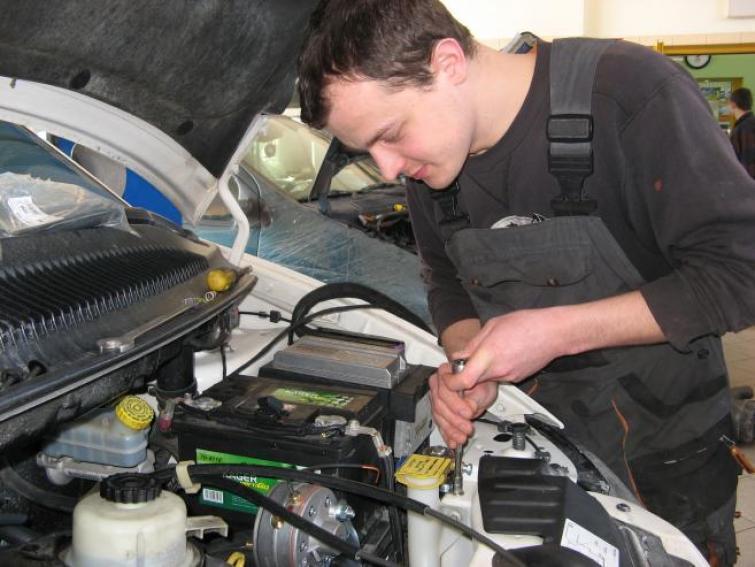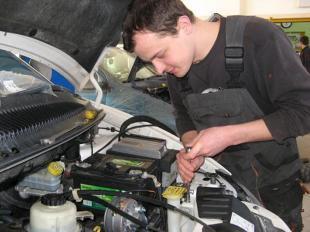
Repair and adjustment of the gas installation - take care of it before winter
 Before winter, it is worth checking the gas installation. This will reduce gas consumption and reduce the risk of engine damage. We advise which items to check.
Before winter, it is worth checking the gas installation. This will reduce gas consumption and reduce the risk of engine damage. We advise which items to check.

A car running on autogas can drive without a failure of the LPG system for many years, but subject to a number of conditions. First of all, you need to remember that the maintenance of such a car requires regular inspection and replacement of more elements than in the case of a gasoline car. Secondly, LPG should be refueled at verified stations to minimize the risk of filling the tank with low-quality fuel. Finally, some car parts should be replaced a little more often than recommended by manufacturers in cars without gas installations.
See also: We buy a used gas car - what to check, maintenance of LPG installations
Overview of the gas installation
It must be carried out within the time recommended by the manufacturer of the LPG system. Usually inspection is carried out after a run of 15 thousand. km or every year. What comes first. The newer the type of installation, the longer the intervals between visits to the workshop can be.
During the inspection, the tightness of the installation at the junctions of the pipelines is checked. There are several ways to do this, but the main one is to use a portable device called a leak detector, which detects and locates leaks. This is signaled by an audible signal and flashing LEDs.
ADVERTISING
Filters should also be replaced. In installations of the 30th generation, i.e. with sequential gas injection, there are two of them: a liquid phase filter and a volatile phase filter. It is recommended to replace the liquid phase filter after a run of 15-20 km. km. On the other hand, the volatile phase filter is replaced after XNUMX-XNUMX thousand mileage. km. In LPG installation systems other than the XNUMXth generation, there is only one filter - the liquid phase.
We fill LPG in liquid form. There is pressure in the tank, due to which, after opening the valve in the multivalve, the gas flows through the pipes to the solenoid valve. Then it enters the evaporator through the pipeline, where it is heated. Thus, it enters the volatile phase. When mixed with air, it is sucked in by the engine and fed into the combustion chamber.
Contaminants that are delivered to the tank along with gasoline cannot enter the engine, because over time they will disable it. Filters are there to prevent this. Although replacing them is not a very difficult operation for an experienced driver, it is better not to do it yourself, because you can change the installation parameters. As a result, gas fuel consumption may increase. If the filters of the gas system are clogged, we will feel a drop in power during acceleration, we will notice uneven operation of the engine, and even its stalling when running on gas.
When inspecting, it is important to adjust the gas installation, which is performed at the very end. The performance of the engine on both gasoline and LPG is then evaluated and an exhaust gas analysis carried out.
– A poorly adjusted gas installation will bring only costs instead of savings. The car will consume much more LPG than it should, says Piotr Nalevaiko, head of Q-Service in Bialystok. - That is why the mechanic, after connecting the computer, performs the so-called calibration. It also aims to tune the parameters of the gas system so that the engine runs smoothly when running on LPG.
See also: Gas installation on a car - which cars are better with HBO
Candles, wires, oil, air filter
When inspecting a gas installation, one should not miss checking and replacing other elements that are not part of the installation.
A gas engine operates under more extreme conditions than a gasoline engine, especially at higher temperatures. For this reason, spark plugs have a shorter life. Especially with older types of installations, they should be replaced every 15-20XNUMX. km.
– Unless to use iridium and platinum candles, which serve not 60, but 100 XNUMX km of run, – adds Petr Nalevaiko. – Then the period of their replacement should be reduced by half.
Only owners of vehicles with XNUMXth generation installations are not required to reduce replacement periods, but must adhere to the manufacturer's recommendations. You should definitely not extend the replacement period.
When replacing spark plugs, you need to check the condition of high-voltage cables: there are no breakdowns on them, and their rubber covers are not brittle, cracked or perforated. It is difficult to determine after what time the wires should definitely be replaced. Therefore, it is simply advisable to check their condition regularly.
Although there are motor oils on the market that say on the packaging that they are for gas-powered vehicles, this is purely a marketing ploy. Oils for gasoline engines will fulfill their role in a car running on LPG one hundred percent.
In gasoline-only vehicles, engine oil with a filter is usually changed every 10-20 thousand. km or every year at the time of inspection. Some new car manufacturers recommend changing the oil every two years, and increase the mileage between oil changes to 30 or 40 kilometers.
Owners of LPG vehicles should change their engine oil more frequently. . Higher engine operating temperatures and the presence of sulfur lead to faster wear of the additives in the oil. Consequently, its operation should be reduced by about 25 percent. For example - if we change the oil after a run of 10 8 km. km, then when driving on HBO, this must be done after a run of XNUMX thousand km.
The air filter is inexpensive, costs several zlotys, and it is also easy to replace. Therefore, it is worth doing this when inspecting a gas installation. Cleanliness affects engine performance and fuel consumption. If the air filter is dirty, less air will enter the cylinders than needed, and therefore the air/fuel mixture will be too rich. This will lead to an increase in fuel consumption and even a decrease in power.
See also: Oil, fuel, air filters - when and how to change? Guide
Once every few years, the gearbox and injection rail
The gearbox, also known as the evaporator - according to mechanics - usually withstands 80 thousand. km. After this time, it can most often be replaced, although the element can be regenerated. It is not cheap, as it costs about 200 zł. A new vaporizer costs between PLN 250 and 400. We will pay about PLN 250 for the work, the price also includes checking and adjusting the gas installation. If we decide to replace the gearbox, remember that it is also a good idea to replace the water pipes in the cooling system. Over time, they will harden and may crack, causing coolant to leak.
The regulator may fail due to diaphragm rupture. Symptoms will be similar to clogged gas filters, in addition, the car interior will smell of gas or it will not be possible to switch from gasoline to gas.
The injector rail withstands the same time as the gearbox. The problems with it are evidenced primarily by the louder operation of the engine. A worn rod is usually replaced with a new one. Depending on the manufacturer, the part itself costs from 150 to 400 zł. In addition, there is a labor force - about 250 zł. The price includes inspection and adjustment of the gas installation.
With more mileage (depending on the car, this can be 50 km, but there is no rule over 100 km), gas-powered cars have problems with higher than usual engine oil consumption. The main symptom of this is smoke from the exhaust pipe, the exhaust is blue and should be colorless. This especially happens shortly after starting the car and during the first kilometers of driving on a cold engine. This is due to the hardening of sealants on valve stems. In most models, after that, among other things, they should be dismantled. Cylinder head, remove valves, replace seals, check valve seats. Repair costs from a thousand zlotys and more, because during it you have to remove a lot of parts. It may be necessary to remove the timing belt and it is recommended to always replace it with a new one.
See also: Ten things to check in your car before winter
Replaceable tank
After 10 years, the gas tank must be replaced with a new one. This is its validity from the date of manufacture. We will pay just over PLN 400 for a new toroidal tank installed in place of the spare wheel, with a replacement. The tank can also be re-registered, but not many services do this. They must have special permits issued by the Transport Technical Supervision. The legalization of a tank usually costs PLN 250-300. and extends its validity by another 10 years. It must be remembered that the tank cannot be operated for a total of more than 20 years.
Remember in winter
The quality of the fueled gas is of great importance. Therefore, it is important to buy this fuel from stations that, we are sure, offer winter-adapted LPG. The less propane in the gas mixture and the more butane in the gas mixture, the lower the pressure. This leads to a drop in power when driving on gas or, in the case of injection systems, to a changeover to petrol.
Always start the engine on petrol. If there are problems with it and you have to light it on HBO in an emergency, we will wait a few minutes before the trip so that the engine warms up to a temperature above 40 degrees Celsius.
Sample prices:* inspection of the gas installation with filter replacement - PLN 60-150,
* adjustment of the gas installation - about PLN 50.
Petr Valchak
ADVERTISING
